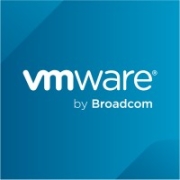Network Traffic Analysis (NTA) is critical for identifying and addressing potential security threats by monitoring and analyzing network flows. It provides valuable insights into network health and vulnerabilities, allowing IT professionals to act proactively.
NTA tools help organizations protect their assets by closely examining the data traversing their networks. These solutions offer deep visibility into network activities and can efficiently detect anomalies and suspicious behavior patterns. By analyzing real-time and historical data, IT teams can strengthen security postures and minimize the risk of breaches. The growing complexity of network environments requires advanced NTA solutions to manage and secure both on-premises and cloud-based resources.
What are the critical features of this solution?Network Traffic Analysis solutions are implemented in various industries such as finance, healthcare, and retail where large volumes of sensitive data must be protected. These industries benefit significantly from the ability to uncover hidden threats and enforce stringent security policies.
Organizations are using NTA to bolster their security frameworks and maintain robust protections against evolving cyber threats. By allowing IT teams to identify and mitigate risks more effectively, NTA tools play an important role in safeguarding organizational assets and ensuring continuity.
| Product | Market Share (%) |
|---|---|
| Darktrace | 23.9% |
| Cisco Secure Network Analytics | 14.6% |
| ExtraHop Reveal(x) | 14.1% |
| Other | 47.4% |
































Noticeably absent from the term “Network Traffic Analysis” is the word “response.” Network-based solutions should be able to not only investigate and detect threats, but also respond rapidly and effectively. There has been a recent shift in terminology to refer to NDR, or “network detection & response,” which uses NTA but then goes one step beyond, with automated threat response and threat-hunting, using intelligent integration with firewalls, NAC, SOAR, or EDR platforms.
Benefits of NTA include:
There are two basic kinds of NTA tools: flow-based tools and DPI (deep packet inspection) tools. Within these, there will be options for historical data storage, software agents, and intrusion detection systems.
Consider the following things when deciding what NTA solution is right for you:
1. Availability of flow-enabled devices. Not all devices are capable of generating the kind of flows required by NTA tools. In contrast, DPI tools accept raw traffic that is vendor independent and found on every network through any managed switch. Network routers and switches don’t require any kinds of special modules or support.
2. The data source: Packet data and flow data come from different sources. Not all NTA tools can collect both. So decide on your priorities before deciding. And then be strategic in choosing what to monitor. Don’t take on too many sources too quickly.
3. Historical data vs. real-time. While historical data can be critical to analyzing past events, not all NTA tools retain this data over time. Have a clear idea of which kind of data is most important to you.
4. Is the software agent-based or agent-free?
5. Full packet capture, complexity, and cost. When looking at DPI tools, consider the cost and expertise required for those that capture and retain all packets versus one that extracts only the critical details and metadata.
Network Traffic Analysis can significantly enhance your cybersecurity by providing real-time visibility into network activity. By continuously monitoring traffic patterns, you can identify unusual or suspicious behavior that may indicate a cyber threat. This proactive approach allows you to detect and address potential security breaches before they cause significant damage, ensuring your network remains secure.
What are the key features to look for in an NTA solution?When evaluating NTA solutions, consider features such as real-time monitoring, automated alerting, threat intelligence integration, and machine learning capabilities. These features enable you to quickly detect abnormal network traffic patterns and automate responses to potential threats. Visualization tools for easy analysis and comprehensive reporting capabilities are also crucial for insights into network performance and security.
How does machine learning improve Network Traffic Analysis?Machine learning improves Network Traffic Analysis by enabling systems to learn from network behaviors and identify anomalies without explicit programming. It can analyze large volumes of data swiftly, providing insights into potential security risks by recognizing patterns that deviate from the norm. This adaptability helps in automating threat detection and response, reducing the need for manual intervention.
How does Network Traffic Analysis help in compliance?Network Traffic Analysis aids in compliance by offering detailed monitoring and reporting capabilities, ensuring adherence to regulatory requirements. It tracks user activities and accesses, providing an audit trail that helps in demonstrating compliance with standards such as GDPR, HIPAA, or PCI-DSS. NTA solutions can generate reports that showcase conformity with these regulations, reducing the risk of non-compliance penalties.
Can NTA solutions be integrated with existing security tools?NTA solutions can indeed be integrated with existing security tools such as SIEM, firewalls, and intrusion detection systems. This integration provides a more comprehensive security posture by correlating network traffic data with other security data, enhancing threat detection and response. It ensures a seamless flow of information, allowing for more effective incident response and management.